Significance
Keypoints
- Propose a method for single image texture translation
- Demonstrate use of propose method for data augmentation by experiments
Review
Background
Image-to-image translation has been a key application of deep neural networks. CycleGAN is one of the most successful model for this task, which can translate a horse image to a zebra, or a photo into a painting by Monet. However, a trained CycleGAN can map one-to-one relationship between the two domains, meaning that it requires re-training the model to translate a source image to another reference image. The authors try to address this issue and propose an image translation method with single source-reference pair. Fast image translation enables the use of the proposed framework as a data augmentation method, which is shown by experiments.
Keypoints
Propose a method for single image texture translation
The proposed Single Image Texture Translation (SITT) method consists of a pair of encoder-decoders for encoding and decoding the content (source) and the texture (reference) of the input images.
The encoder-decoders are trained with adversarial loss, cycle-consistency loss (or latent regression loss), VGG19 perceptual loss, and the KL divergence loss.
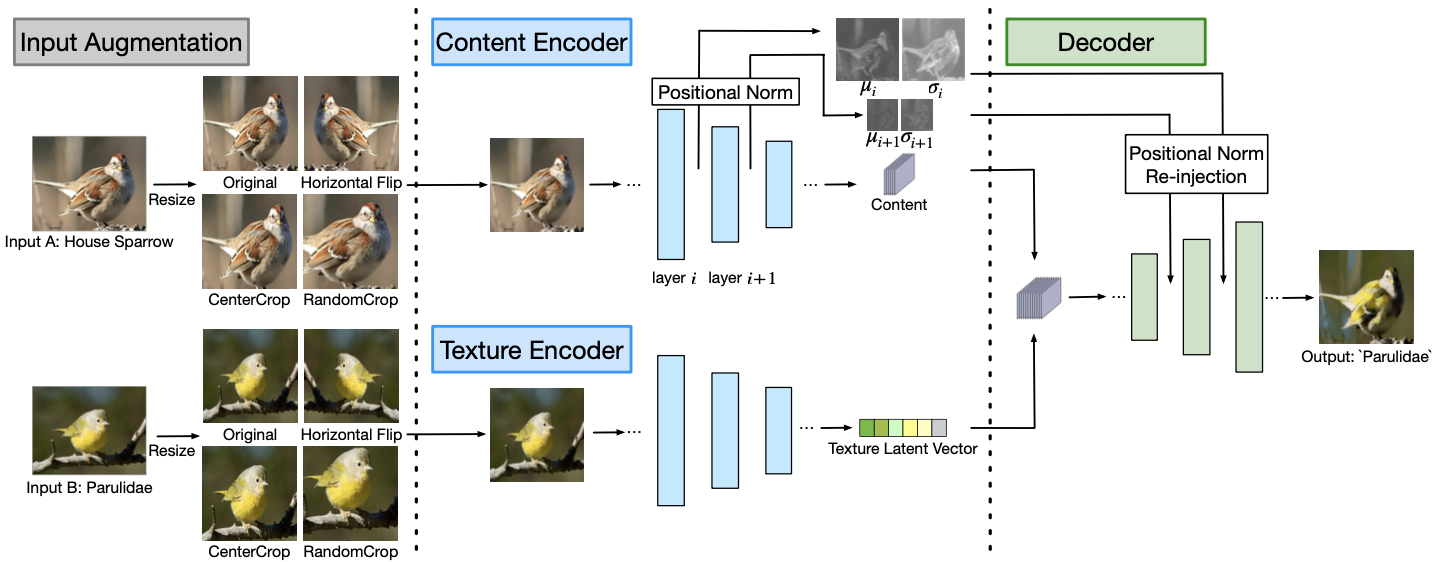 Schematic illustration of the proposed method
For the content encoder, positional norm is employed to better preserve the structural information by re-injecting the information to the decoder.
Schematic illustration of the proposed method
For the content encoder, positional norm is employed to better preserve the structural information by re-injecting the information to the decoder.
Demonstrate use of propose method for data augmentation by experiments
Quality of the image translation is evaluated by FID, LPIPS, and the VGG loss scores compared with baseline models including ArtStyle, CycleGAN, SinGAN, FUNIT, and TuiGAN.
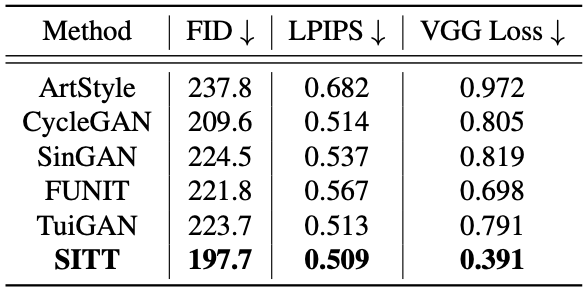 Quantitative comparison of image translation quality
Quantitative comparison of image translation quality
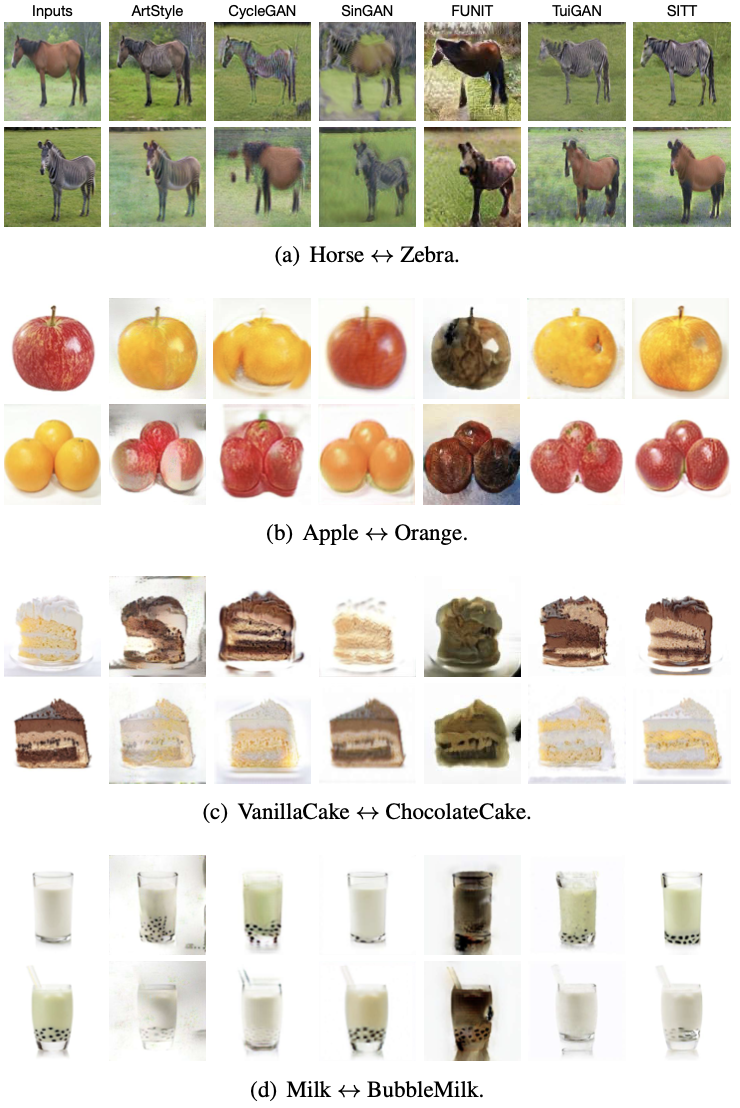 Qualitative comparison of image translation quality
Qualitative comparison of image translation quality
 Computation time comparison by sec/iter
It can be seen that the proposed SITT outperforms baseline methods while being faster.
Computation time comparison by sec/iter
It can be seen that the proposed SITT outperforms baseline methods while being faster.
Owing to its speed and quality, the authors exploit SITT as a data augmentation method for challenging datasets such as the Plant Pathology 2020.
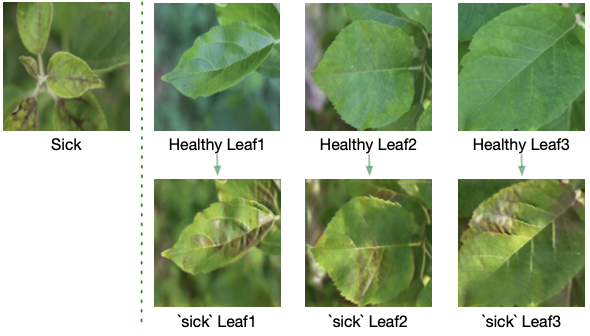 Exemplar images of data augmentation for Plant Pathology dataset
Exemplar images of data augmentation for Plant Pathology dataset
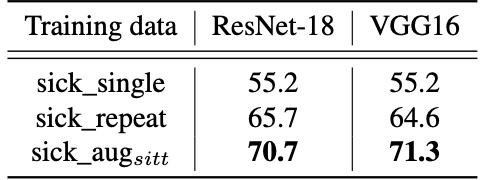 Top-1 classification result of healthy/sick leaf classification on Plant Pathology dataset
Top-1 classification result of healthy/sick leaf classification on Plant Pathology dataset
The authors show that augmentation with SITT works complementarily with other augmentation methods
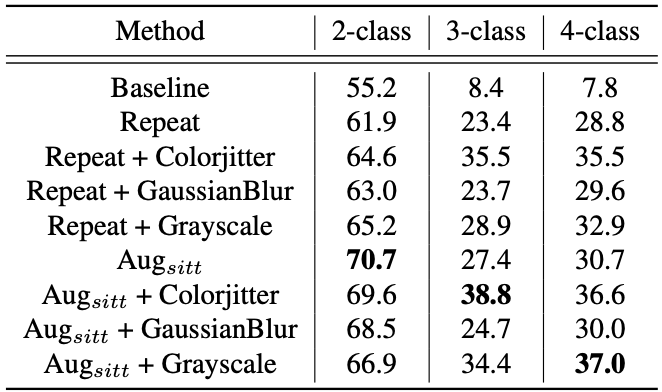 SITT works complementarily with other image augmentations
Results of few-shot image classification and SITT augmentation on other in-the-wild datasets are referred to the original paper.
SITT works complementarily with other image augmentations
Results of few-shot image classification and SITT augmentation on other in-the-wild datasets are referred to the original paper.